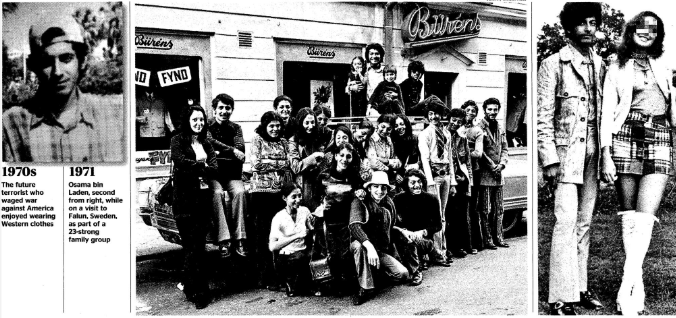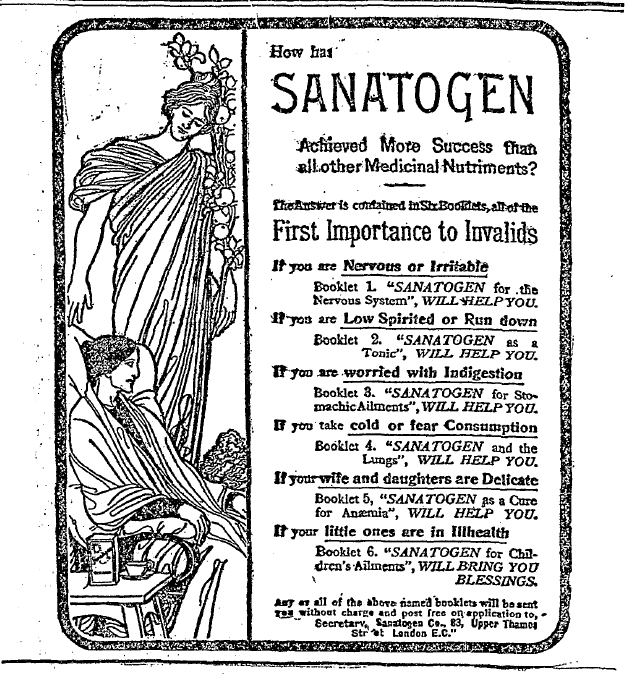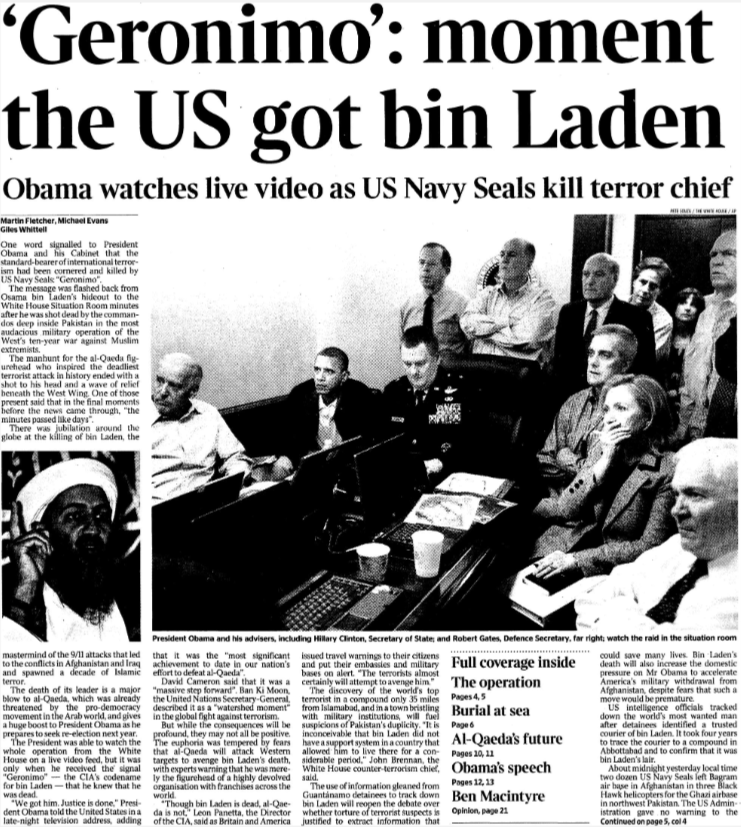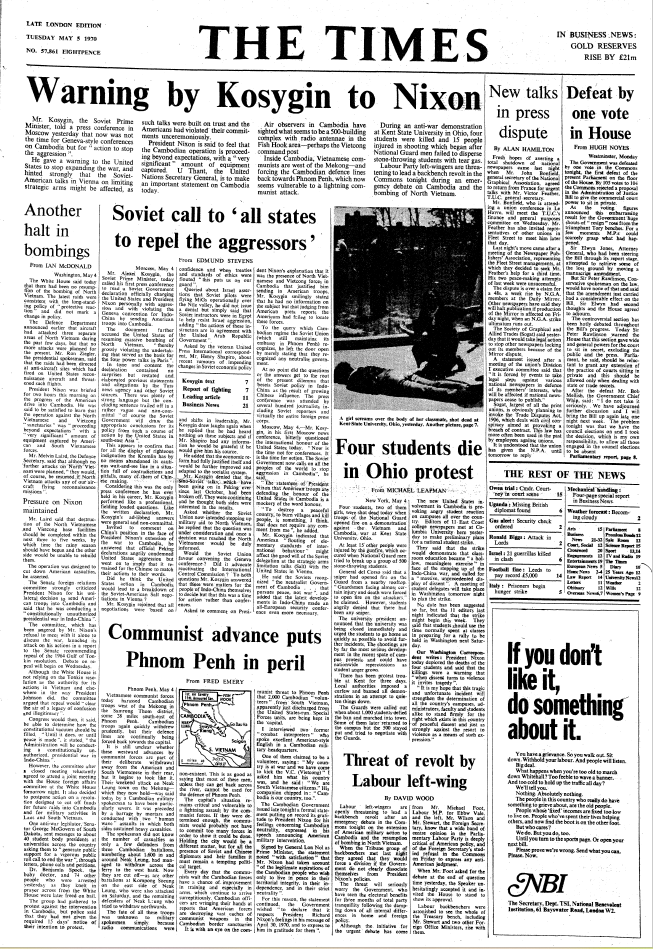| By Gale Staff |
Historical research doesn’t stop at the top-level headlines. For faculty and students eager to get at the why behind the who, what, when, and where, they need the kind of detail that summaries or secondhand accounts can’t provide.
Across more than 11 million articles, The Times Digital Archive preserves events of the past as they were originally reported—through the full issues of the newspaper itself. Every edition from 1785 to 2019 appears as it did in print, capturing the headlines, editorials, advertisements, financial reports, and cultural commentary.
Widely regarded as the “newspaper of record” for the English-speaking world, The Times has published in-depth, award-winning reporting for nearly 250 years. For American researchers, it provides a valuable external lens on U.S. history, as it captures events from outside the fray of domestic coverage.
Full-Page Archives with Research-Ready Tools
The Times Digital Archive’s facsimile format grants researchers an unfiltered lens into events, preserving the historical texture that escapes later retellings and noting the details in language that hasn’t yet been softened by historical distance.
At the same time, the platform’s advanced search capabilities support complex, multi-variable analysis that allows researchers to efficiently move through centuries of coverage. These tools equip researchers to cover more ground and consider new connections and approaches for their research.
For example, a media studies student researching consumer culture at the turn of the century can browse advertisements from 1890 to 1910 to explore how gendered marketing helped define social norms. Using keyword searches like “beauty” or “remedy” and filters for illustrated content, the researcher will find ads that present women as both consumers and caretakers of fragile domestic life, tasked with maintaining beauty, managing health, and preserving familial harmony. Every search leads back to the full-page layout, so readers never lose the broader visual and editorial context that shaped the story.
“Sanatogen.” Times, November 29, 1904, 12. The Times Digital Archive (accessed April 29, 2025). https://link.gale.com/apps/doc/CS202305405/TTDA?u=seoblogs&sid=bookmark-TTDA&xid=118abd3b.
To better understand The Times’ unparalleled ability to support research across disciplines, from economic history to media studies and beyond, let’s explore a selection of May headlines.
From Fear to Farce: Coverage of the Hunt for Osama bin Laden
In the decade following 9/11, The Times’ political coverage of Osama bin Laden—both written and visual—tended to speak of him as an omnipresent, seemingly untouchable figure.
In addition to extensive front-page reporting, The Times mentioned him in connection with ideological manifestos. In coverage of figures such as Zacarias Moussaoui, bin Laden’s shadow loomed large, the symbol of extremism within and beyond the Middle East. Even in seemingly tangential stories—unrest in Algeria or the erosion of Britain’s reputation abroad—his presence was ubiquitous.
Editorials, like John le Carré’s “The United States of America Has Gone Mad,” written in the lead-up to the Iraq War, cast bin Laden as an emblem of the unintended outcomes of military intervention and as a distraction from a mania for oil access.
Visual commentary reinforced that narrative. One caricature depicted President George W. Bush sawing through bin Laden’s final perch only to reveal a growing pile of labeled branches beneath it—symbols of the many failed attempts to locate him. Another, captioned “Where Is Bin Laden?” portrays a member of the Taliban running a shell game with a cruel grin on his face, suggesting that the U.S. was being toyed with in a game it couldn’t win.
These artifacts reflected a broader reality: bin Laden remained at large, his survival reinforcing the perception that he, or at least his name, was the catalyst behind global events. He became shorthand for the anxieties that defined the era.
That journalistic framing seemed to collapse overnight. When the May 3, 2011, edition of The Times landed on doorsteps in the wake of bin Laden’s assassination on May 2, the paper replaced years of grainy cave footage with a front page presenting an image of American composure, captured in a tight shot of the White House Situation Room.
Martin Fletcher, Michael Evans, and Giles Whittell. “‘Geronimo’: moment the US got bin Laden.” Times, May 3, 2011, [1]+. The Times Digital Archive (accessed April 29, 2025). https://link.gale.com/apps/doc/IF0504219398/TTDA?u=seoblogs&sid=bookmark-TTDA&xid=1f64cfff.
Inside, journalists took readers through the operation with forensic clarity: a timeline of the raid, diagrams of the SEAL team’s approach, and an analysis of his burial at sea. In their procedural reporting, The Times took a figure who once loomed large in the public imagination and made him seem suddenly small.
But the sharper tonal shift came in the editorials. While the news reporting deflated bin Laden with facts and statistics, the opinion section dismantled him through ridicule. “Our Bogeyman the Mummy’s Boy” told subscribers that bin Laden wasn’t a mastermind but an emotionally stunted, paranoid recluse. Elsewhere in the paper, Obama roundhouse kicked bin Laden, rendered in bobblehead form, and the Statue of Liberty flung her leg defiantly in the air, mid-cancan kick, in celebration.
International Reflections on the Kent State Shootings
On May 4, 1970, the Ohio National Guard fired into a crowd of student protesters at Kent State University, killing four and wounding nine. The Times featured the story on its front page the following day, relaying the National Guard’s claim that a rooftop sniper had fired first. However, eyewitnesses disputed that assertion and the same front-page article quoted students who denied the sniper’s existence. By the next day, the paper published further contradictions, citing both a New York Times reporter and the Ohio Highway Patrol, who had found no evidence of a shooter.
McDONALD, IAN, EDMUND STEVENS, FRED EMERY, MICHAEL LEAPMAN, Our Washington Correspondent, and DAVID WOOD. “Warning by Kosygin to Nixon.” Times, May 5, 1970, 1. The Times Digital Archive (accessed April 30, 2025). https://link.gale.com/apps/doc/CS17003173/TTDA?u=seoblogs&sid=bookmark-TTDA&xid=cd7d996e.
As a British publication not bound by domestic pressures, The Times was positioned to observe the U.S. government’s narrative with a degree of critical distance. Its reporters covered the officially reported facts but also highlighted the contradictions, an editorial stance that created an ongoing dialogue in the paper about Kent State within a broader examination of state violence.
Editorials in the following weeks included pieces like “US paradox: law enforcers who break the law.” In it, journalist Louis Heren recalled witnessing colonial riot control in 1950s India, where British officials operating within an unjust imperial system nevertheless enforced order with visible authority and calculated restraint. At Kent State, he argued, that control had broken down, suggesting that the U.S. seemed increasingly unable to regulate the violence it unleashed on its citizens.
Heren’s argument went beyond Ohio, demanding answers to urgent questions: “Why were the Chicago police allowed to run amok during the 1968 Democratic National Convention? Why were 43 people killed in Detroit and 23 in Newark?”
The paper also captured the tension in its visual documentation of the public response. An image of a young woman wailing over the body of a dead student made the front page, while one of a tear gas cloud settling over the campus dominated page 7.
The May 9 issue ran a photo series on page 5 under the headline “Cambodian Crisis,” juxtaposing the American response to ongoing protests as the police violently clashed with demonstrators in New Orleans and New York. Beside these images was one of a group of American professors in London delivering a letter of protest to Downing Street while a police officer smiled and held the door.
A letter to the editor from a British father, Dr. R. Slack, voiced anguish not just at the deaths, but at the logic behind them: “It is surely pertinent and relevant to ask whether the behaviour of the latter [the students] could in any circumstances justify the irreversible results caused by the behaviour of the former [the National Guard].”
Tracking Trade in the Early Industrial Era
A nation’s imports reveal what it lacks, its exports reveal what it has mastered. For researchers, The Times Digital Archive preserves these economic shifts in real-time, offering primary-source insight into the forces that shaped global trade.
The May 4, 1785, edition of The Times offers rich examples of this evolution in motion, with its weekly tally of global commodities in “Goods imported into the Port of London.” The manifest illustrates how much Britain relied on overseas resources, drawing in raw materials from its colonies and trading partners to sustain its industries and growing urban centers. Ships from Jamaica, North Carolina, and Greece offloaded raw cotton and sugar, alongside cochineal, saffron, and indigo—dyes that would color Britain’s textiles. Tobacco and timber arrived from the American South, while Dutch and French merchants contributed fine goods and spirits.
By 1835, those same pages began to reflect the impact of Britain’s growing industrial capacity. Trade ledgers recorded how continued industrial growth improved production capacity, with notable increases in shipments of finished goods.
Steel and iron exports, for example, increased by 20% over five years. Even today, steel remains central to discussions about the UK’s industrial economy, with production trends often used to gauge the strength and sustainability of domestic manufacturing.
At the same time, imported raw materials like cotton, wool, and linen were now returning to international markets as finished textiles, dyed and milled in British factories. This upward trend in exports marked the rise of industrial cities like Manchester, where growing infrastructure helped convert global supply chains into domestic output at unprecedented speed.
Reconstructing Historical Narrative with The Times Digital Archives
Without full context, historical archives risk narrowing the researcher’s field of vision. A headline above the fold carries a different weight than a paragraph buried in the margins. Editorials can reinforce or undercut reporting simply by appearing alongside it.
Through these insights, researchers can explore questions other sources rarely address: What editorial boundaries shaped what could be reported and how? How did public opinion manifest across a paper’s opinion columns and letters to the editor? What stories seemed happenstance at the time of their reporting, but proved to be prognosticators of future events?
The full-facsimile format of The Times archive restores context around how events were packaged and presented to the public, a resource that supports in-depth analysis of the daily news in light of how the paper was put to bed the evening before.
Ready to dig in and explore? Contact your local Gale sales representative to request a free trial or learn about Gale’s other newspaper archival sources.




